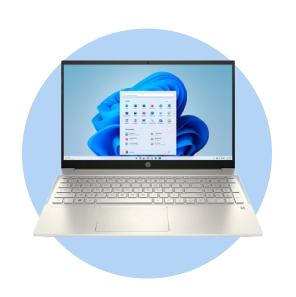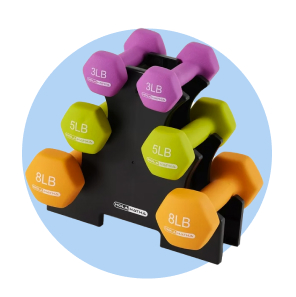
How to Create Classroom Activities for College Students
Improve learning outcomes through collaboration
As a college instructor, you’re likely looking for opportunities to make your syllabus as effective as possible within limited time or resources. That’s why many instructors turn to active learning strategies to enhance their lesson plans.
Rather than relying on traditional teaching methods, active learning engages students through interactive critical thinking exercises. Studies show that active learning is more effective at boosting information retention and developing critical thinking skills. Active learning activities can also be easier for some instructors to plan and execute, depending on the exercise or subject.
If you’re looking for a place to start, Walmart Business can help. Our guide will help you create engaging and informative classroom activities for college students without negatively impacting your teaching schedule.

How to approach active learning activity development
Active learning concepts go beyond assigning homework or requiring students to take notes during lectures. They involve active participation, discussion and collaboration among instructors and their students, leading to a deeper understanding of the source material.
While every instructor will have their own approach to developing their lesson plan, the Holistic Active Learning Framework developed by L.D. Fink and adapted by the Columbia University Center for Teaching and Learning provides a solid foundation. It guides instructors through a three-step process that helps students encounter information, engage with the ideas within the supplied information and reflect on those ideas in a meaningful way. This framework is a cycle—as students reflect on recent learnings, they can apply this new viewpoint when they encounter additional information throughout the school year.
When developing your own interactive classroom activities for college students, you can use this framework as a jumping-off point.
Encounter
Here, you will decide what information your students will learn. This information can come from a variety of sources, like specific books, studies or videos. You will also need to determine how students will encounter this information, whether through synchronous, in-person instruction or asynchronous learning conducted outside of the classroom.
Engage
Once you’ve chosen what information you want your students to learn, it’s time to develop ways for them to meaningfully engage with that information. With active learning, however, this goes beyond assigning reading or rote memorization tasks.
Engaging with information requires a hands-on approach, like fostering in-person debates and discussions. Try organizing brainstorming sessions with open-ended prompts or performing experiments that allow students to discover how systems and concepts they’ve read about interact with each other in the real world. During this step, you should also determine which supplies you need to create a compelling and engaging activity.
Reflect
After students have engaged with the ideas, it’s time for them to think back and apply what they’ve learned to their own lives and values. While individual concepts like algebraic equations or Shakespearean sonnets may be interesting to learn in their own right, students reflecting on how they can use this information to navigate the world around them further cements this connection and increases information retention.

Strategies for developing engaging classroom activities for college students
Ask open-ended questions
While students need to understand the people, places or dates involved with the concepts you’re trying to teach, this is only a foundational step before fully internalizing these concepts. Asking open-ended questions is an excellent way to make students dig deeper into what they’ve learned and apply that information in new ways.
The types of questions you ask will vary depending on the subject, but you can look for ways to frame questions about how concepts apply to what students think about a topic or connect them to current events. The beauty of this type of prompt, though, is that it doesn’t take a lot of planning or special equipment—a single question can open a number of doors for deeper discussion and engagement.
There are a few ways to engage students with open-ended questions. A free writing session can provide a quiet moment of individual reflection, giving students a chance to grapple with a topic before sharing their thoughts with the rest of the class. You can make it more collaborative with an impromptu group discussion—write a question on the whiteboard and have students provide input or bounce off their peers’ ideas.
The Think-Pair-Share method offers a synthesis of both approaches. First, students think about the question on their own, maybe free-writing their answer for a few minutes. Then, they break off into pairs (or groups of three or more for larger class sizes) to compare and build on their ideas. Finally, each group shares their thoughts with the broader classroom to promote further discussion.
Give students synchronous & asynchronous opportunities to learn
Everyone learns differently and approaches collaboration in their own way. Some are outgoing and ready to share their ideas in class; others are more reserved and comfortable communicating their ideas through the written word. No one approach is necessarily correct, but you can use a combination of synchronous and asynchronous learning methods to provide a well-rounded approach to creating classroom activities for college students.
For example, you could fill the gaps between lecture hall hours with supplemental discussion through online message boards. These platforms give students a chance to gather their thoughts and reply on their own terms without the external pressure of the classroom to make them feel self-conscious about their answers.
Foster friendly competition
Pitting students against each other in a friendly face-off is a fun way to enhance retention and application of course concepts. One study even found that students exposed to games during their coursework improved their average exam score by 7% compared to those who were only exposed to traditional teaching methods.
A simple and quick way to create a fun game for your students is to model the question-and-answer structure after popular game shows like Jeopardy. Create a handful of questions based on the course material they just learned, break the class into teams and assign points based on each question’s difficulty level.
Walmart Business saves you time & money on must-have school supplies
With your lesson plan in place, all you need are the right supplies to execute it. Walmart Business can help make it happen. Sign up for a free account today to save time and money as you shop for pens, paper and other school supplies with free shipping to your door on orders over $35.1
Already have an account? Upgrade to Walmart Business+ for opportunities to save over $500 a year2 and enjoy exclusive rewards for your department.


Limited-time offer
Unlock your special promo code
Stay informed on Walmart Business news & get $20 off a $100 purchase!1
1Minimum order of $100. Promo code can be used one time & may not be combined with other offers. Offer not transferable & void where prohibited by law. Customer responsible for all applicable taxes. Offer expires 12/31/2025 at 11:59pm PT. Further restrictions apply. See terms at checkout for details. Promo code offers available in limited quantities. While supplies last.
1 Excludes most Marketplace items, freight and certain location surcharges.
2 Savings based on 1 free $35+ delivery order vs. $9.95 fee and 1 free shipping order under $35 vs. $6.99 fee biweekly, plus 2% Walmart Business Rewards on monthly order >$250 (average value of $400).
Exciting news awaits
Hear firsthand about new products, features & promotions.
By clicking submit, you agree to receive emails about Walmart Business and acknowledge you have read and agreed to our Terms of use and Privacy Policy.










